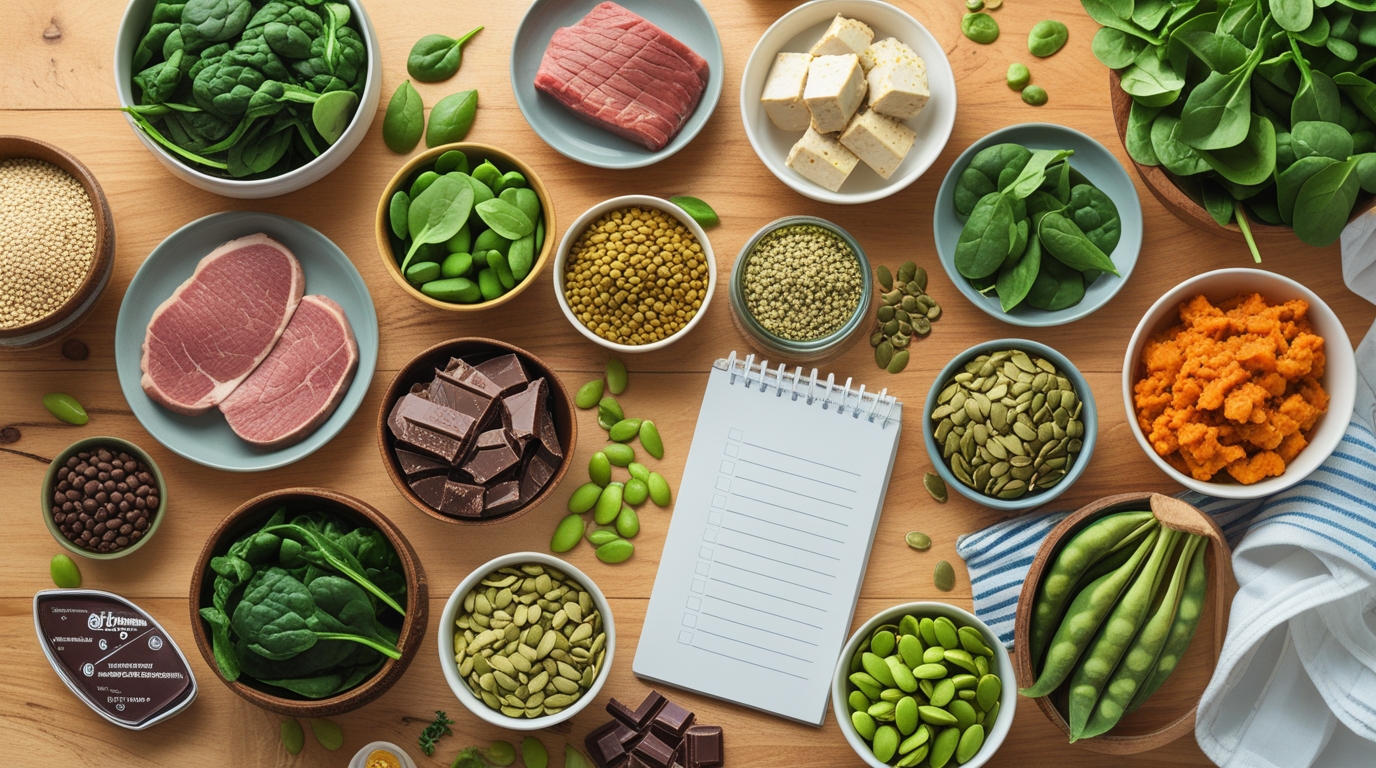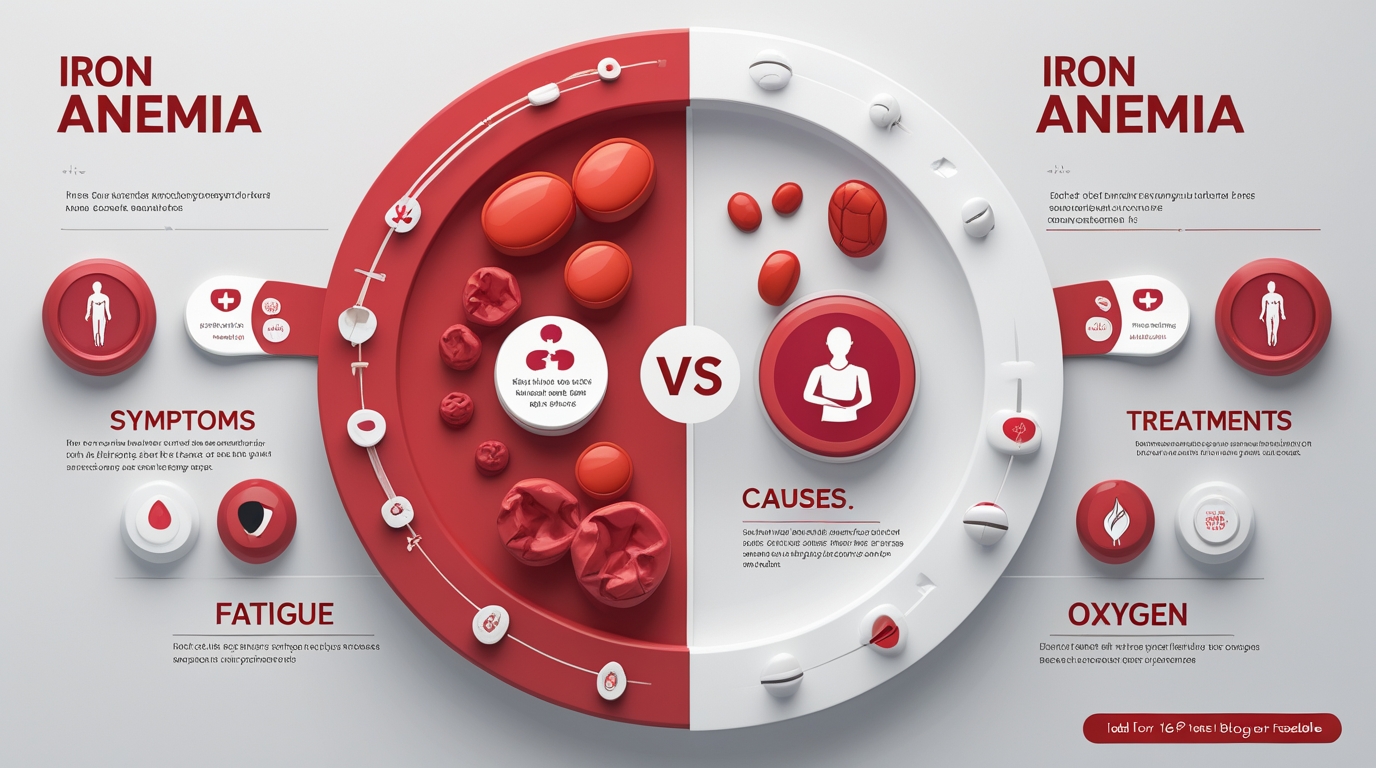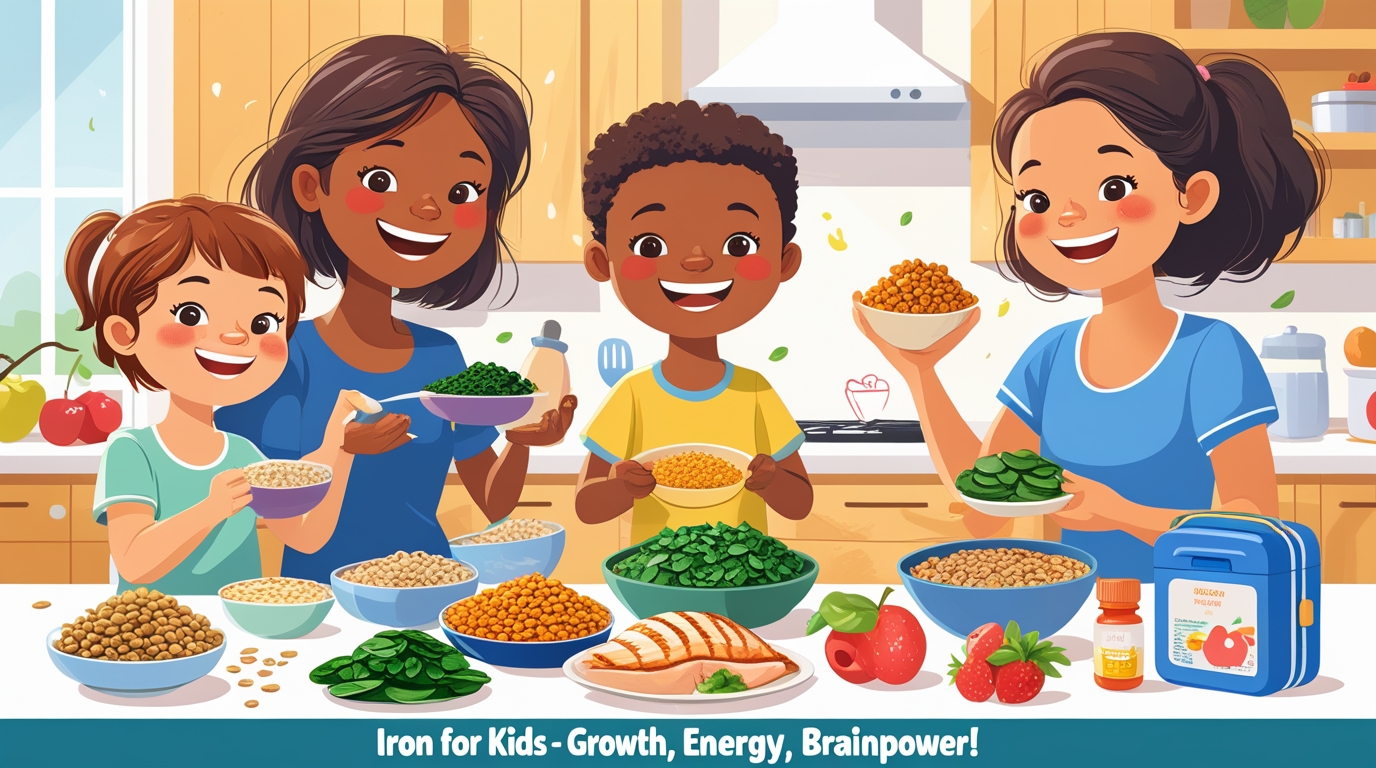Introduction
Iron is one of the most essential minerals your body needs — yet many people, especially women in the United States, don’t get enough. The good news? Including the best foods high in iron in your daily meals can help combat fatigue, poor concentration, cold hands and feet, and even iron deficiency anemia.
Whether you’re noticing early signs of deficiency or simply aiming to boost your overall nutrition, focusing on the best foods high in iron is a smart first step.
In this guide, we’ll highlight the top 15 iron-rich foods commonly found in U.S. grocery stores — from meat and seafood to vegetarian options and healthy snacks. You’ll also discover tips to enhance iron absorption, avoid common mistakes, and get the most from related nutrients.
Why Your Body Needs Iron from the Best Foods High in Iron
Iron is essential for the production of hemoglobin, a protein in red blood cells that carries oxygen throughout your body. Without enough iron, your body struggles to deliver sufficient oxygen to your muscles and tissues, which can lead to symptoms such as:
- Chronic fatigue
- Weakness and poor stamina
- Pale skin
- Dizziness or lightheadedness
- Cold hands and feet
Read: Iron Deficiency Symptoms in Women
Types of Iron Found in the Best Foods High in Iron
There are two forms of dietary iron:
- Heme Iron – Found in animal products like meat, poultry, and fish. Easily absorbed by your body.
- Non-heme Iron – Found in plant-based foods like beans and spinach. Not as easily absorbed, but still beneficial.
Advice: To improve absorption, pair non-heme iron with foods high in vitamin C!
Top 15 Best Foods High in Iron to Add to Your U.S. Grocery List
1. Beef – One of the Best Foods High in Iron (Lean Ground or Chuck Roast)
Beef is one of the best natural sources of heme iron, which your body absorbs more efficiently than plant-based iron. A 3-ounce serving of cooked lean beef provides approximately 2.7 milligrams of iron. It’s widely available in most U.S. grocery stores—opt for healthier cuts like chuck roast or 93% lean ground beef for maximum benefits.
2. Chicken Liver
Not everyone loves the taste, but chicken liver is a superfood when it comes to iron, with nearly 10 mg of iron per 3-ounce serving. It’s also loaded with vitamins A, B12, and folate. You can fry it lightly with onions or use it in pâtés or stews.
3. Turkey (Especially Dark Meat)
Compared to white flesh, turkey’s dark meat has higher iron. About 2 mg of iron is provided by a 3-ounce portion. It is a fantastic substitute for red meat because it is lean and high in protein. Use it for oven-roasted meals, sandwiches, or wraps.
4. Canned Tuna
A super convenient pantry item, canned tuna is rich in iron and omega-3 fatty acids. A small can (3 oz) contains about 1.3 mg of iron. It’s perfect for lunch salads or sandwiches. Choose low-mercury light tuna when possible.
5. Oysters
You can get about 8 milligrams of iron from only 3 ounces of oysters, making them a nutritional powerhouse. That’s almost all the iron you need each day! They also contain a lot of B12 and zinc. Despite being quite expensive, they make a great occasional treat.
6. Lentils
A favorite among vegetarians, lentils provide roughly 3.3 mg of non-heme iron per half cup of cooked lentils. They are also high in plant protein and fiber. For a heart-healthy iron boost, add them to salads, stews, or soups.
7. Spinach
About 3.6 milligrams of iron are found in half a cup of cooked spinach. It is also an excellent source of magnesium and calcium. Spinach absorbs iron more when cooked. Add it to pasta recipes, curries, or omelets.
8. Tofu
A half-cup of tofu contains around 3 mg of iron and is rich in protein and calcium. Tofu absorbs flavors well, making it a flexible ingredient for stir-fries, curries, or grilled skewers — especially for plant-based diets.
9. Fortified Breakfast Cereals
Many popular US cereals are fortified with up to 100% of your daily iron needs. Check nutrition labels — brands like Total, Cheerios, and Special K often contain up to 18 mg of iron per serving. Pair with fruit and a splash of vitamin C-rich juice for better absorption.
10. Pumpkin Seeds
These crunchy seeds are an excellent on-the-go snack and provide roughly 2.5 milligrams of iron per ounce. Add them to salads, yogurt, or cereal. They are also a good source of zinc and magnesium, which are important nutrients for women’s health.
11. White Beans
In addition to being high in fiber and protein, half a cup of cooked white beans contains around 3.3 milligrams of iron. They make a nutritious dip when combined with olive oil and garlic, or they are delicious in soups and stews.
12. Quinoa
When cooked, this gluten-free grain provides about 2.8 milligrams of iron per cup. It’s also simple to prepare and a full protein. Use it in bowls with grilled meat and vegetables or as a substitute for rice.
13. Dark Chocolate (70% or higher)
One ounce of high-quality dark chocolate can provide up to 2 mg of iron. It’s a delicious way to treat yourself while supporting your iron levels. Choose brands with minimal sugar for the best benefits.
14. Swiss Chard
Another leafy green option, Swiss chard gives about 2 mg of iron per cooked half-cup, along with vitamin K, fiber, and magnesium. Use it in sautés, soups, or stuff it into wraps.
15. Edamame (Soybeans)
About 2.3 milligrams of iron can be found in half a cup of cooked edamame. You can add these to salads and noodle bowls or eat them as a snack. They are ideal for plant-based diets because they are also abundant in fiber and protein.
How to Absorb Iron More Effectively from the Best Foods High in Iron
Pair the best foods high in iron with vitamin C-rich sources like:
- Bell peppers
- Citrus fruits (oranges, grapefruit)
- Strawberries
- Tomatoes
Explore: Vitamin D Guide for Americans
Foods That Block Iron Absorption
Limit these during iron-rich meals:
- Tea and coffee (contain tannins)
- Calcium supplements
- High-dairy meals
Is your calcium out of balance? Learn more
Do You Still Need Iron Supplements If You Eat the Best Foods High in Iron?
If your iron levels are low or your doctor recommends it, iron supplements can be helpful. However, avoid self-medicating — excess iron can be harmful and may lead to health complications.
Amazon Affiliate Pick:
MegaFood Blood Builder – Gentle Iron Supplement with Vitamin C & B12 (Affiliate link – supports our blog at no extra cost to you.)
Related Nutrients to Watch
Iron doesn’t work alone! You also need:
- Magnesium – Supports red blood cell health
- Calcium – Should be balanced carefully with iron
- Vitamin D – Affects immune function and energy
Calcium Deficiency in Women – Know the Signs
Vitamin D Deficiency in the US – What the Data Says
Frequently Asked Questions (FAQs) About the Best Foods High in Iron
1. What is the best source of iron for women?
The most absorbable sources include chicken liver and lean red meat, such as beef. Lentils and fortified cereals are great options for vegans.
2. Can I get enough iron without eating meat?
Yes, however, you’ll need to avoid blockers like calcium and tea during meals and mix foods high in vitamin C with non-heme iron items.
3. How much iron do women need daily?
Usually, women between the ages of 19 and 50 require 18 mg daily. Women who are pregnant require considerably more, about 27 milligrams each day.
4. Does the cooking method affect iron content?
Yes. Cooking in cast iron skillets can increase the iron content of foods, especially acidic dishes like tomato sauce.
Conclusion: Eat Smart with the Best Foods High in Iron
Whether you’re dealing with symptoms of iron deficiency or just want to feel more energized and strong, adding iron-rich foods to your US grocery list is a simple and effective way to protect your health.
From lean meats to leafy greens and plant-based proteins, these foods can help you fight fatigue, prevent anemia, and feel more energized in your daily life.
For more science-backed insights on how iron affects your body, check out this helpful guide on iron-rich foods from Healthline.
And if you’re also looking to understand other nutrient deficiencies common among women, don’t miss these:
- Iron Deficiency Symptoms in Women
- Calcium Deficiency in Women
- Vitamin D Deficiency in the United States
Call to Action
Which of these iron-rich foods do you already eat regularly?
Tell us in the comments — and don’t forget to share this list on Pinterest or with friends who need more energy in their lives!
Disclaimer
This content is for informational purposes only and is not intended to replace professional medical advice, diagnosis, or treatment. Always consult your healthcare provider before making dietary changes or starting supplements.



